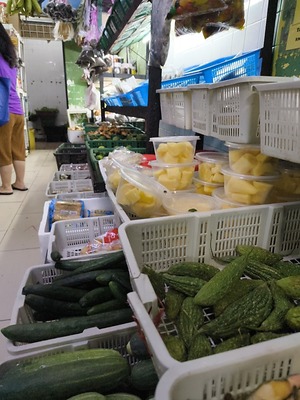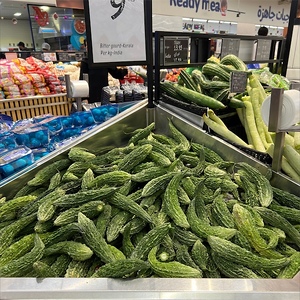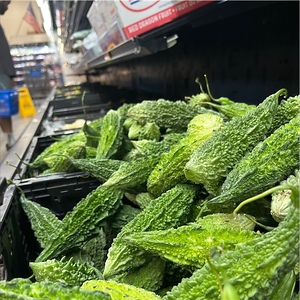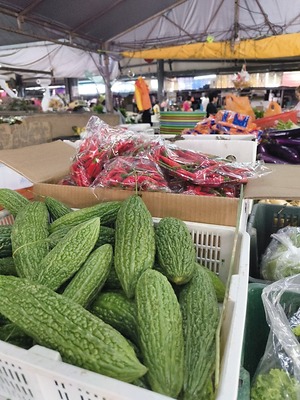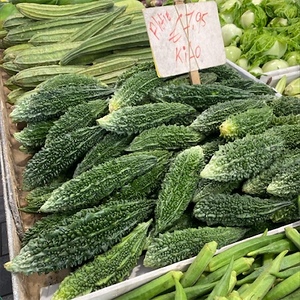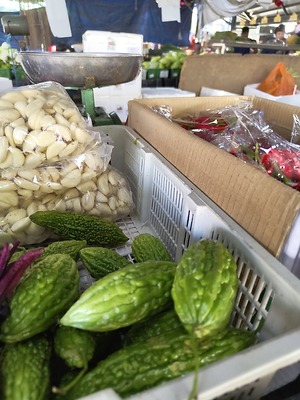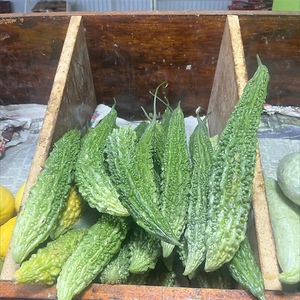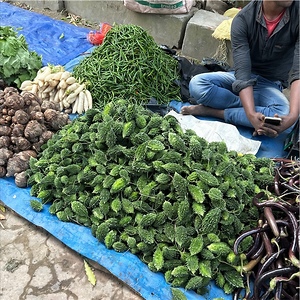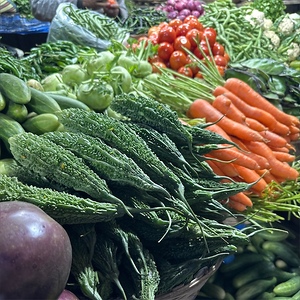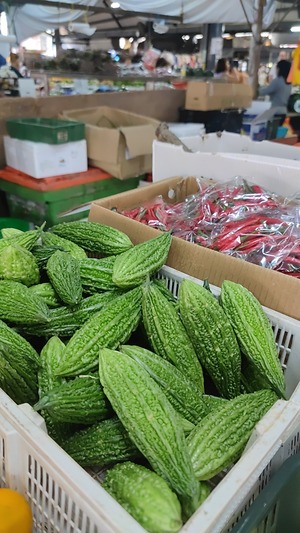

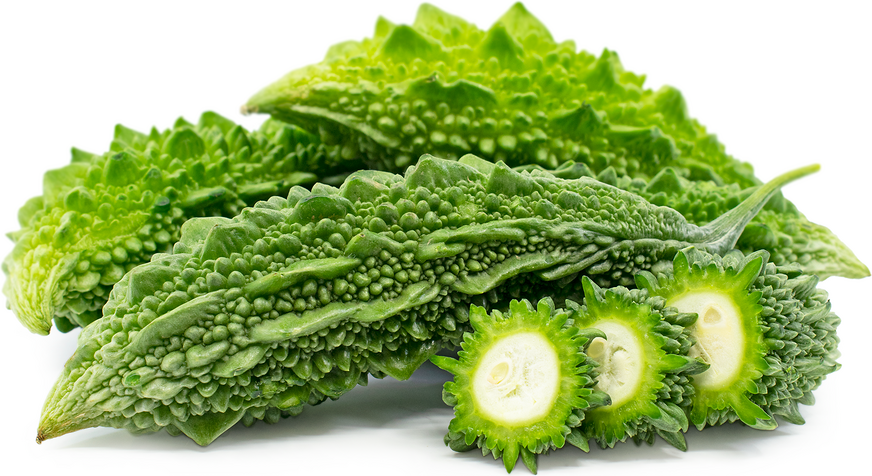
Indian Bitter Melons
Estimated Inventory, lb : 0
Description/Taste
Indian bitter melons are small to medium-sized fruits, averaging 10 to 25 centimeters in length, and have a narrow, cylindrical shape with tapered, pointed ends. The skin is thick, bumpy, waxy, and rough, covered in many small, irregularly shaped ridges known as teeth. The skin also ripens from green to yellow-orange when mature. Underneath the surface, the flesh is crisp, firm, white, and aqueous, encasing a small cavity filled with seeds and pith. Indian bitter melons are considered unpalatable when raw, and once cooked, they develop a tender consistency with a sharp, bitter flavor.
Seasons/Availability
Indian bitter melons are in the summer through early winter.
Current Facts
Indian bitter melons, botanically classified as Momordica charantia, are bitter, hanging fruits that grow on a climbing vine belonging to the Cucurbitaceae family. There are two main types of bitter melon, labeled as Indian and Chinese, and Indian bitter melons are widely cultivated around the world for their uniquely shaped fruits. Also known as the Bitter cucumber, Bitter squash, Balsam-Pear, and Bitter gourd in English, Nigauri and Goya in Japanese, Karela in Hindi, Peria in Malay, and Ampalaya in Tagalog, Indian bitter melons are grown in tropical and subtropical climates and are used as both a culinary and medicinal ingredient.
Nutritional Value
Indian bitter melons are an excellent source of potassium, which can help balance fluid levels in the body, and are a good source of iron and fiber. The melons also contain antioxidants such as vitamins A and C and provide some magnesium, phosphorus, zinc, and quinine, which gives the fruit its bitter taste. In Ayurvedic medicine, bitter melon has been used for centuries to help regulate blood sugar levels in diabetic patients, aid in digestion, and reduce symptoms associated with migraines.
Applications
Indian bitter melons are considered unpalatable when raw, and are best suited for cooked applications such as frying, boiling, and sautéing. The seeds and pith are very bitter and should be removed before cooking. It is also recommended to soak the melon in salt water for at least twenty minutes to help reduce the bitterness. Indian bitter melons are popularly stuffed, breaded, and fried, tossed into curries, soups, and stews, or mashed with potatoes as a side dish. The melons are also stir-fried with other vegetables and meats to balance out the bitter flavor, served with yogurt, cooked into omelets, or steeped into a tea. Indian bitter melons pair well with spices such as turmeric, cumin, coriander, and chili powder, lemon juice, pita bread, caramelized onions, lentils, meats such as pork, beef, and poultry, tofu, seafood, eggplant, okra, string beans, tomatoes, lima beans, and coconut milk. The fresh melons will keep 4-5 days when stored in a sealed bag in the crisper drawer of the refrigerator.
Ethnic/Cultural Info
Bitter melons are deeply intertwined into the history of Okinawa, which is an island located in southern Japan. The fruits have been grown on the island for hundreds of years and are traditionally stir-fried in goya dishes. After World War II, Okinawa was severely damaged, and the island’s survival was primarily due to the aid of the United States’ military. During this time, canned foods became vital, especially spam, and a new version of goya was created that incorporated tofu, bitter melon, spam, and eggs. In the modern-day, goya-tofu is still widely prepared across Japan and among Japanese communities around the world. The dish is made with its traditional ingredients, including spam, and is fried in sesame oil and seasoned with soy sauce. Goya-tofu is seen as a dish that pays homage to the cultural history of Okinawa, telling the island’s story on a single plate, and combines bitter, salty, and mild flavors to create a balanced meal.
Geography/History
Bitter melons are native to India, specifically to the northeastern Bengali region, and have been growing wild since ancient times. The variety was then introduced to China during the 14th century, where it became widely cultivated, and also spread in popularity to Japan and Southeast Asia. Today Indian bitter melons are harvested from the wild and are commercially cultivated through select growers in Asia, Southeast Asia, Africa, Europe, Australia, South America, the United States, and the Caribbean.
Recipe Ideas
Recipes that include Indian Bitter Melons. One



